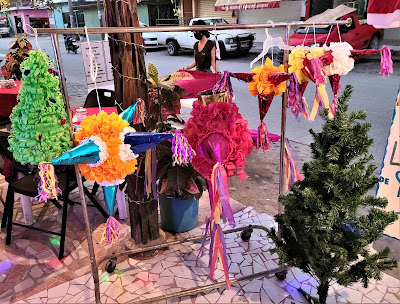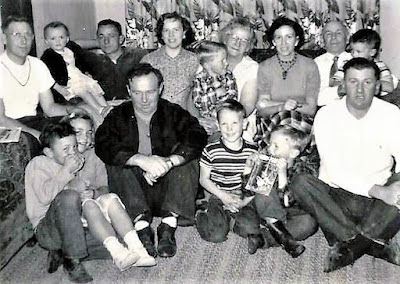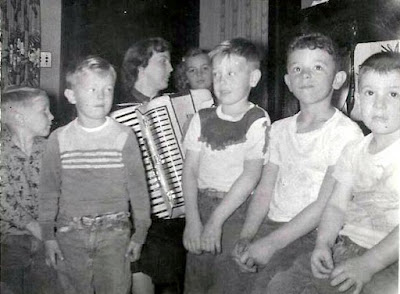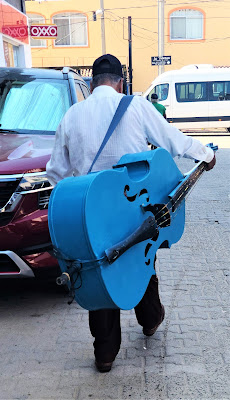Every small town has it list of recurring conversation topics.
Barra de Navidad is no exception.
The unchanging weather. The ever-changing beach. Who can win the contest of spending the least amount of money to stay here for six months this season.
But for the northern anal retentives, who could easily enrich the wallet of a Freudian, there is a perennial question -- Where does all of Barra's sewage go?
Wags will say that it is discharged into the salt water laguna south of Barra. And they are not entirely wrong.
During the summer rains, the sewers are frequently over-powered by the sudden water surge and the sewage fountains into the streets, proving Newton's law of universal gravitation is not just for apples. In the summer months, the streets of The Fancy Part of Town frequently do a good impression of the canals of Venice. With about the same ratio of sewage and water. It saves a trip to Italy.
But that is the exception, not the rule.
For most of the summer and the entirety of the rest of the year, there is a quite adequate sewer system that pumps the daily deposits of the populace off into the outskirts of town. That is, if the pumps are doing what they should, and if the never-ending discussions between the Leaño family and the municipality of Cihuatlán do not break down into another service embargo concerning the sewer, water, and garbage systems.
I have never put my mind to exploring the terminus of the sewer system. I only knew two facts. The first was that the sewage dumps into a settling pond on the road past the old turtle-processing plant. The second was that I had seen what I took to be a bermed reservoir on that road across the street from Villas Coco Mango.
In an attempt to break my obsession with walking too much each day, this morning I decided to walk through my neighborhood on a shooting expedition. When I walk at my usual pace, I cannot spot photo opportunities, let alone take the time to set up the shot.
So, off I headed at my usual walking pace until I came to the parish church on the east end of town. The moment I started shooting, my walking pace dropped to a stroll.
While walking toward Villa Coco Mango, I was focusing on a group of turkey vultures, black vultures, and two caracaras that were finishing up the remains of some unfortunate creature. I noticed the bermed reservoir I had driven past so often. Today, I had the time to take a closer look.
At first, I thought it was a flooded sugar cane field. But it was not sugar cane, It was a large stand of cat-tails. And other aquatic plants.
Then the proverbial penny dropped. I pulled out my logic calculator and added my two facts together. This was the fabled sewage settling pond. A quick look at the color of the water flowing into the pond answered that question.
The pond is ion two parts, and is quite large. Like all sewage settling ponds around the world, the effluent flows in at one end. Gravity and evaporation do their job (along with the flora and fauna) to settle the nutrients to the bottom of the pond and to provide an aquatic home for wildlife.
And wildlife there is. Plenty of birds. Red-winged blackbirds. Grackles. Scoters. Jacanas. Gallinules. Plovers. Anis.
If you have even the slightest interest in birds, grab a field guide and a pair of binoculars to spend a fruitful day of bird-watching. Maybe pack a lunch. The stench is far less than I had anticipated. Next time, I will remember my good camera.
I often have trouble telling the sheep from the goats in my neighborhood. So, I will let you be the judge what these are. The owner thought he had a good way to keep his mini-flock corralled by placing them on an island in the settling pond.
That did not deter a mother and her sprog from swimming the short distance to where the grass was not obviously greener than on the other side.
A good deal of work has recently been completed on the berm. For good reason. During our heavy rains this year, the old levee failed, flooding the surrounding homes with unwelcome effluent. (Is there such a thing as welcome effluent?) The new berm looks far sturdier.
But, for me, the draw was the pond itself. It has an odd beauty. Most of the surface is covered with water cabbage, but the bare areas do what water does best -- reflects its surroundings.
The skeletons of dead trees drowned by the pond add their own eerie note. As if they were warnings in a Tolkien tale that the beauty that draws the eye contains the secret of the end we will all face.
I enjoy living near the beach, though I have not been on the sand in almost a decade. The beach's attraction for me is to sit near the ocean while enjoying a meal.
And that is exactly what I feel about the settling pond. I appreciate its utilitarian purpose. But I enjoy its eccentric beauty that hides its own secrets.
It will be worth a future visit.



























